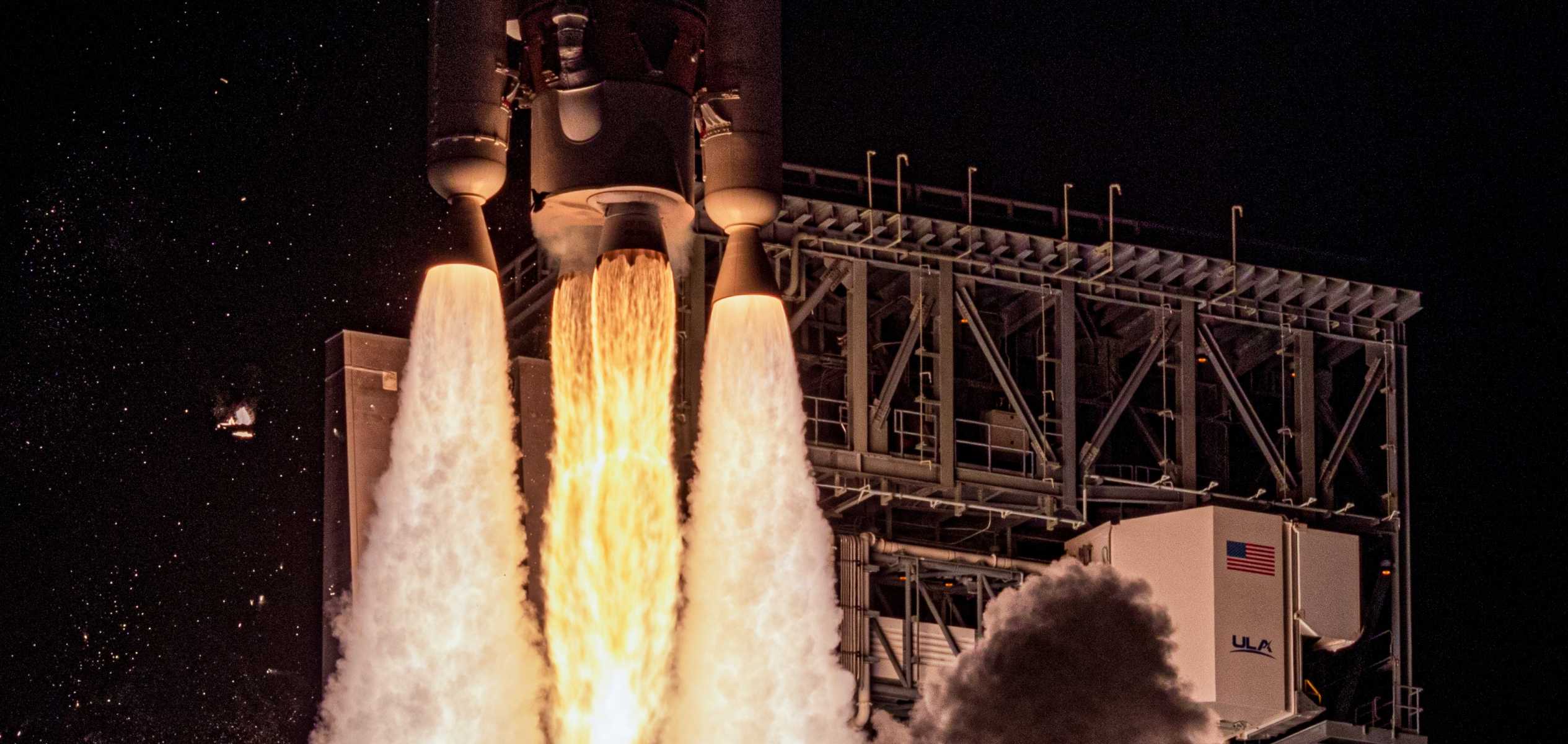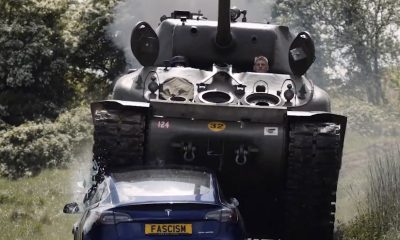

News
Boeing's astronaut capsule flies off course, fate uncertain after launch debut
Roughly 30 minutes after lifting off for the first time on a United Launch Alliance (ULA) Atlas V rocket, Boeing’s Starliner crew capsule suffered a major failure when it attempted to raise its orbit with onboard engines.
A few hours after the failure came to light, NASA and Boeing held a press conference to update members of the media on the situation, with the space agency offering some candid – if a bit odd – insight into Starliner’s anomalous launch debut. Before the spacecraft’s software threw a wrench into the gears, the plan was for Starliner to separate from ULA’s Atlas V Centaur upper stage and use its own thrusters to reach orbit and begin the trek up Earth’s gravity well to the International Space Station (ISS).
While it will likely take weeks or even months for Boeing and NASA to determine exactly what went wrong during the mission, preliminary information has already begun to paint a fairly detailed picture.
Around 15 minutes after liftoff, Starliner separated from the rocket as intended but it appears that things began to go awry almost immediately afterward. Most notably, according to NASA administrator Jim Bridenstine’s tweets and later comments, a very early look at the telemetry suggests that Starliner’s internal clock was somehow tricked into believing that the time was either earlier or later than it actually was.
Thinking that it was in the midst of a lengthy thruster firing meant to raise its orbit and send the spacecraft on its way to the space station, Starliner was thus focused on ensuring that it was pointed as accurately as possible. Although the space station is the size of a football field, in the vastness of space, rendezvousing with it is a bit like threading a needle. While firing thrusters to do so, spacecraft thus need to point themselves as accurately as possible.
While coasting before or after one of those orbit-boosting thruster firings, Starliner thought it was actually burning towards the space station and was thus very carefully controlling its orientation with a dozen or so smaller thrusters. In short, those unintentional thruster firings burned through a ton of Starliner’s limited propellant supply – enough to make it impossible (or nearly so) for the spacecraft to rendezvous and dock the ISS, a central purpose of this particular launch.

This ultimately means that Starliner is leaning heavily on the “test” aspect of this Orbital Flight Test (OFT), uncovering failure modes and bugs that Boeing was clearly unable to tease out with ground testing and simulation. While in a totally different ballpark, SpaceX similar Crew Dragon spacecraft suffered its own major failure earlier this year, although that capsule explosion occurred during intentional ground testing, whereas Starliner’s software failed during its high-profile launch debut and has severely curtailed the scope of the spacecraft’s first orbital flight test.
In fact, Bridenstine was unable to rule out the possibility that Boeing will have to attempt a second uncrewed orbital flight test (OFT) before Starliner will be qualified to launch the space agency’s astronauts. Although early signs suggest that Boeing will still be able to attempt to deorbit and recover the spacecraft a day or two from now, the fact that Starliner will not be able to perform critical demonstrations of its ISS rendezvous and docking capabilities will make it far harder for NASA to rationally certify the spacecraft for astronaut launches.

SpaceX’s Crew Dragon, for reference, completed a more or less flawless launch, orbit raise, and rendezvous before docking with the ISS. It’s almost impossible to imagine NASA giving SpaceX permission to proceed immediately into its first astronaut launch if Crew Dragon had failed to reach the proper orbit or dock with the space station.
Regardless, it’s far too early to tell whether Boeing will have to repeat Starliner’s OFT. If Starliner performs absolutely perfectly between now and its planned soft-landing in New Mexico, there might be a chance that NASA will still allow Boeing to effectively cut corners to its astronaut launch debut, but only time will tell.
Check out Teslarati’s Marketplace! We offer Tesla accessories, including for the Tesla Cybertruck and Tesla Model 3.
News
Tesla China registrations bounce back to 11.1k vehicles in May’s 2nd full week
Tesla China’s domestic vehicle registrations have been volatile in recent weeks.

Tesla reported 11,130 insurance registrations in China in the week of May 12-18, 2025. These represent a 262.5% increase from 3,070 registrations that the company saw in the week ending May 11.
Tesla China’s domestic vehicle registrations have been volatile in recent weeks, suggesting that Giga Shanghai may still be exporting Model 3 and Model Y vehicles to foreign territories this month.
Tesla China’s Registrations
In the week ending May 4, Tesla China saw 7,300 new vehicle registrations. This was not that surprising considering that Tesla may still be allocating Gigafactory Shanghai’s output to vehicle exports. In the week ending May 11, however, industry watchers were quite surprised to see just 3,070 registrations from Tesla China.
The 262.54% bounce in vehicle registrations in the week ending May 18 is thus a pleasant update from the world’s biggest and most competitive electric vehicle market. Even with these results, however, industry watchers still note that Tesla China’s registrations this 2025 are still down 6.5% year-over-year.
Tesla China does not report its weekly sales figures, though the company’s overall performance in the domestic automotive sector can be inferred through new vehicle registration data. Fortunately, these registrations are closely tracked by industry watchers, as well as local automakers such as Li Auto.
Domestic Sales and Exports
Following the start of domestic deliveries of the new Model Y in China, expectations were high that the company would see a steady rise in registrations this second quarter. Giga Shanghai does not only supply vehicles to the domestic Chinese market, after all, as the facility also serves as the company’s primary vehicle export hub, providing Model 3 sedans and Model Y crossovers to several territories.
Tesla China sold 28,731 vehicles domestically and exported 29,728 vehicles in April. In comparison, the company saw 74,127 domestic registrations and 4,701 exports in March 2025, as per data compiled by CNEV Post. Considering Tesla China’s registrations this May, it would not be surprising if the company’s exports this month would exceed March’s 4,701 units.
News
xAI receives more Tesla Megapacks for Colossus 2

xAI is bolstering its Colossus 2 data center in Memphis with 168 Tesla Megapacks, enhancing the energy infrastructure for its ambitious AI supercomputer expansion. The deployment underscores xAI’s push to lead AI innovation while addressing environmental concerns.
The first Colossus site is connected to a 150 megawatts (MW) substation powered by MLGW and TVA. It is supported by approximately 156 Megapacks, providing 150 MW of stored energy backup to xAI’s supercomputer. The 168 Tesla Megapacks recently delivered to xAI’s Memphis site will provide battery storage backup to Colossus 2.
In December 2024, xAI doubled the capacity of Colossus to 200,000 Nvidia H100 GPUs, which consumes 250 MW of power–enough to energize 250,000 homes. In March 2025, the AI company bought a 1-million-square-foot site in Whitehaven, Memphis, for $80 million. xAI’s Whitehaven site could host up to 350,000 GPUs with the potential to deploy the largest number of Tesla Megapacks for backup power.
xAI plans to scale Colossus up to 1 million GPUs to create the world’s largest AI supercomputer. A 1-million-GPU setup would require over 1 gigawatt, about one-third of Memphis’s peak summer demand.
Initially reliant on natural gas turbines, Colossus faced criticism for nitrogen oxide emissions. The 150 MW substation, completed in early 2025, reduced turbine use by half, with Megapacks providing cleaner backup power. By fall 2025, xAI expects the second substation to come online. Once the second substation is online, the remaining turbines will only be used for backup, reducing the project’s carbon footprint.
Tesla Energy’s Q1 2025 performance, with a 156% year-over-year increase and 10.4 GWh of storage deployed, supports xAI’s needs. Tesla’s Megapack factory in Waller County, Texas, set to create 1,500 jobs, signals further commitment to scaling energy solutions for projects like Colossus.
xAI’s rapid expansion, backed by Tesla Megapacks, positions it to rival AI leaders like OpenAI and Google. The Colossus 2 deployment reflects a strategic blend of cutting-edge AI and sustainable energy. As Memphis’ infrastructure adapts to unprecedented power demands, xAI and Tesla are reshaping the AI landscape with a focus on efficiency and environmental responsibility.
News
Grok 3 by xAI Rolls Out on Azure AI Foundry with Free Trial
Grok 3 is now on Azure AI Foundry with a free preview until early June. From code to vision, Grok joins a growing roster of powerhouse models.

xAI’s Grok 3 model is now available on Microsoft’s Azure AI Foundry Models, launching with a free preview to drive AI innovation. The collaboration marks a significant step in making advanced AI accessible to developers worldwide.
Grok 3 became available on Microsoft’s Azure AI Foundry Models on May 19, 2025. Developers can explore xAI’s Grok 3 at no cost through early June. After the free trial period, Grok 3 prices will be as follows:

“Microsoft and xAI are thrilled to unveil the availability of Grok 3 into the Azure AI Foundry Models, marking a significant milestone in AI accessibility and innovation,” Microsoft stated in its announcement.
The partnership integrates xAI’s cutting-edge model with Azure’s secure, scalable infrastructure, enabling enterprise scenarios in reasoning, coding, and visual processing. Grok 3 is accessible via Azure AI Foundry’s catalog, alongside models from OpenAI, Meta, Cohere, NVIDIA, and Hugging Face, reflecting Microsoft’s commitment to a diverse AI ecosystem.
“The addition of xAI’s Grok 3 underscores Microsoft’s commitment to support an open, diverse AI ecosystem, rather than relying on a single model provider,” the company noted.
Like other AI models in Azure, developers can easily discover and deploy Grok 3’s model card. Grok 3 is also available for testing on GitHub models.
Microsoft provides two flexible deployment options for integrating xAI’s Grok 3 into applications: Standard Pay-Go or Provisioned Throughput Units (PTUs). The Standard Pay-Go option allows pay-per-token API calls for quick scaling. Meanwhile, the PTUs are better for reserved capacity with predictable latency.
“For production scenarios where you expect steady high volume or need strict latency, provisioning Grok 3 with PTUs can be cost-effective and reliable,” Microsoft advised.
The launch of Grok 3 on Azure AI Foundry empowers developers to build intelligent assistants, process large documents, or explore new AI applications. As xAI and Microsoft combine innovation with robust tools, Grok 3’s arrival signals a new era of AI development, inviting creators to leverage its capabilities and shape the future of technology.
-

 News2 weeks ago
News2 weeks agoTesla Cybertruck Range Extender gets canceled
-

 Elon Musk5 days ago
Elon Musk5 days agoTesla seems to have fixed one of Full Self-Driving’s most annoying features
-

 Lifestyle2 weeks ago
Lifestyle2 weeks agoAnti-Elon Musk group crushes Tesla Model 3 with Sherman tank–with unexpected results
-

 News2 weeks ago
News2 weeks agoStarlink to launch on United Airlines planes by May 15
-

 News2 weeks ago
News2 weeks agoTesla Semi gets new adoptee in latest sighting
-

 News2 weeks ago
News2 weeks agoTesla launches its most inexpensive trim of new Model Y
-

 News2 weeks ago
News2 weeks agoNew Tesla Model Y proves very sturdy after shocking high-speed crash
-

 News2 weeks ago
News2 weeks agoUS’ base Tesla Model Y has an edge vs Shanghai and Berlin’s entry-level Model Ys






















